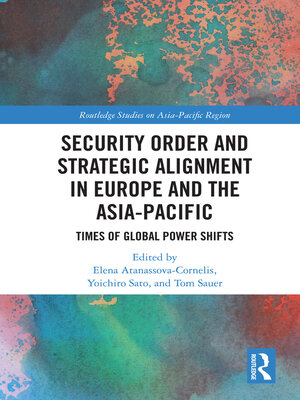Security Order and Strategic Alignment in Europe and the Asia-Pacific
ebook ∣ Times of Global Power Shifts · Routledge Studies on the Asia-Pacific Region
By Elena Atanassova-Cornelis

Sign up to save your library
With an OverDrive account, you can save your favorite libraries for at-a-glance information about availability. Find out more about OverDrive accounts.
Find this title in Libby, the library reading app by OverDrive.



Search for a digital library with this title
Title found at these libraries:
| Library Name | Distance |
|---|---|
| Loading... |
Elena Atanassova-Cornelis, Yoichiro Sato, Tom Sauer, and their contributors examine the implications of the shifts in power for the regional security order, as the longterm relative decline of the US standing in the global hierarchy of power is more pronounced than ever due to the challenges it faces from the rising China in Asia and the reviving Russia in Europe.
The world is in disarray, and the balance of power is shifting, which results in enhanced tensions and wars, including on the territory of Europe. The complexity of the international order that prevails today possibly misleads us toward viewing everything in terms of a bipolar competition, as predicted by systemic-level realism. While membership of the multilateral NATO Alliance expands in Europe in light of the ongoing Russian invasion of Ukraine, China's assertive behavior in Asia has produced numerous strategic alignments that are short of a formal alliance involving Asian states, the US, and European countries. 'Hedging' strategies are commonly found in Asian states' approaches to security, working against the bifurcation of powers. Contrarily, European entries into alignments in the 'Indo-Pacific' have demonstrated the inseparability of security in Asia from security in Europe through the shared thread of 'engaging the US'. Whether China defines its challenge against the US in regional or global terms also has differing implications for the evolution of the international system. This book, with contributions by Asian, European, and North American experts, provides an overview of the two regions' differing alignment paths in comparative and inter-regional perspectives.
The book is a valuable resource for academics, researchers, practitioners, and policy analysts interested in European and Asia-Pacific security, as well as international and regional security issues.







